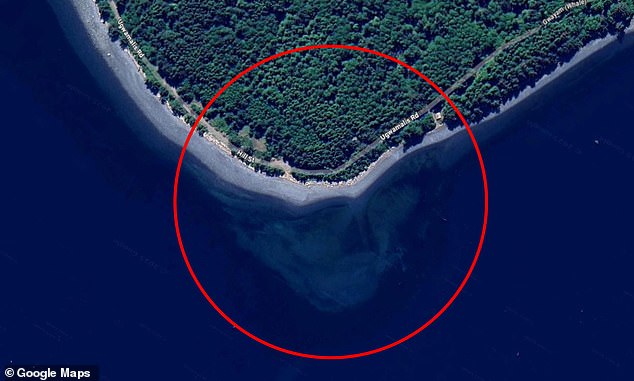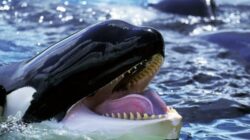Unusual Discovery in Canadian Waters Sparks Debate
A mysterious formation resembling a human skull has recently captured the attention of internet users, sparking discussions about its origins and meaning. This unusual sight was discovered on the northern coast of Cormorant Island, located off Canada’s northeast coast. When viewed from the north, a sandbank beneath the water reveals a distinct shape that looks like a human skull.
This discovery has led to a mix of excitement and skepticism among observers. Some believe it could be a sign of alien interference, while others suggest it is simply a natural geological formation. The structure can be found on Google Maps by searching for the village of Alert Bay, the island’s only settlement. However, to see the ‘face’ looming out from the waters, users need to rotate the map 180 degrees.
Tolong support kita ya,
Cukup klik ini aja: https://indonesiacrowd.com/support-bonus/
Scott Waring, founder of UFO Sightings Daily, who first spotted the shape, shared his thoughts with MailOnline. He believes that ancient alien visitors created the skull as a message to others, stating, “we were here first.” His claim has sparked interest among UFO enthusiasts and those intrigued by the possibility of extraterrestrial life.
Despite these claims, scientists offer a different perspective. They argue that the skull-like formation is likely a natural rock formation, similar to how people often see faces in clouds or other random patterns. This phenomenon, known as pareidolia, is a common psychological tendency where the brain perceives meaningful patterns in random or ambiguous stimuli.
Pareidolia is not just limited to seeing faces; it can also lead people to interpret various shapes as objects or figures. Dr. Robin Kramer, an expert on face perception from the University of Lincoln, explains that our face detection system has evolved to be highly sensitive. It is more advantageous to occasionally see faces where there are none than to miss actual faces.
Professor Kevin Brooks, a psychologist at Macquarie University, adds that humans tend to classify anything vaguely face-like as a face until proven otherwise. This evolutionary mechanism helped our ancestors identify friends and enemies, making it crucial for survival.
Dr. Susan Wardle, a researcher at the National Institutes of Health, notes that pareidolia is not typically a sign of any psychological issues. However, individuals who are more prone to believing in the paranormal may experience more instances of pareidolia. A Finnish study from 2012 found that people with religious or paranormal beliefs are more likely to see faces in random stimuli, which could explain why some individuals frequently find patterns in geological features.
While most people who see faces in objects recognize that the faces are not real, issues can arise when people interpret visual patterns to have meanings they do not. It is important to distinguish between true perceptions and illusory ones.
The debate surrounding this discovery highlights the intersection of science, psychology, and human imagination. Whether the formation is a natural occurrence or a sign of something more extraordinary, it continues to captivate the public’s curiosity and inspire discussions about the unknown.







